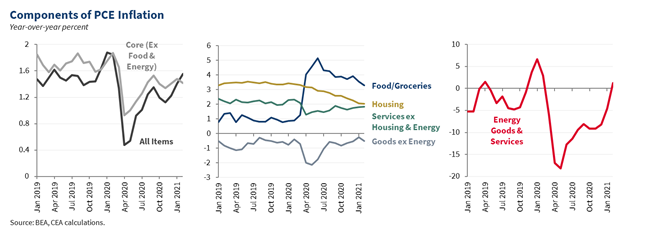
For the past four decades, the view that lower taxes, less spending, and fewer regulations would generate stronger economic growth has exerted substantial influence on U.S. public policy. 1/
Over this period, the United States has underinvested in public goods such as infrastructure and innovation, and gains from growth have accrued disproportionately to the top of the income and wealth distribution 2/
Long-standing racial, ethnic, and gender disparities persist. In addition, while historic progress has been made in expanding health insurance, more remains to be done to provide adequate protection against economic risk. 3/
Indicators of deprivation, such as child poverty, are too high, and declines in overall life expectancy in some years prior to the pandemic, accompanied by increased disparities, are cause for concern. 4/
The Tax Cuts and Jobs Act of 2017 reflected the old orthodoxy of lower taxes. A sharp reduction in corporate taxes during a time of high corporate profits was sold with overly rosy claims about the economic growth that would result. 5/
The law did not deliver on those promises. There has been no evident impact on investment or growth: gross domestic product grew 2.4 percent in the two years leading up to the law’s passage and 2.4 percent in the two years following its passage. 6/
Instead, the tax cuts contributed to inequality by delivering disproportionate gains to the already well off without the promised wage gains for the middle class. 7/
The economic theory underlying President Biden’s American Jobs Plan and American Families Plan is different. 8/
These proposed policies reflect the empirical evidence that a strong economy depends on a solid foundation of public investment, and that investments in workers, families, and communities can pay off for decades to come. 9/
In contrast to the American Rescue Plan, these plans are not emergency legislation, they address long-standing challenges. 10/
In order to function and deliver strong and shared economic gains, markets need an engaged, effective public sector. 11/
From policies that spur innovation and facilitate labor supply to those that provide investments in children and protections against economic insecurity, the public sector has an important role to play in supporting the economy. 12/
These types of public programs enable market actors to go about the business of producing goods and services. 13/
But when policymakers direct the public sector not to do those things—not to invest in innovation, in supporting labor force participation, in children, or in protection from risk—everyone suffers from slower economic growth, greater inequality, and reduced economic security. 14/
In this issue brief, we lay out the economic evidence that demonstrates why robust public investment is an important element of a strong, inclusive U.S. economy. Read the full piece here: whitehouse.gov/wp-content/upl…
• • •
Missing some Tweet in this thread? You can try to
force a refresh







